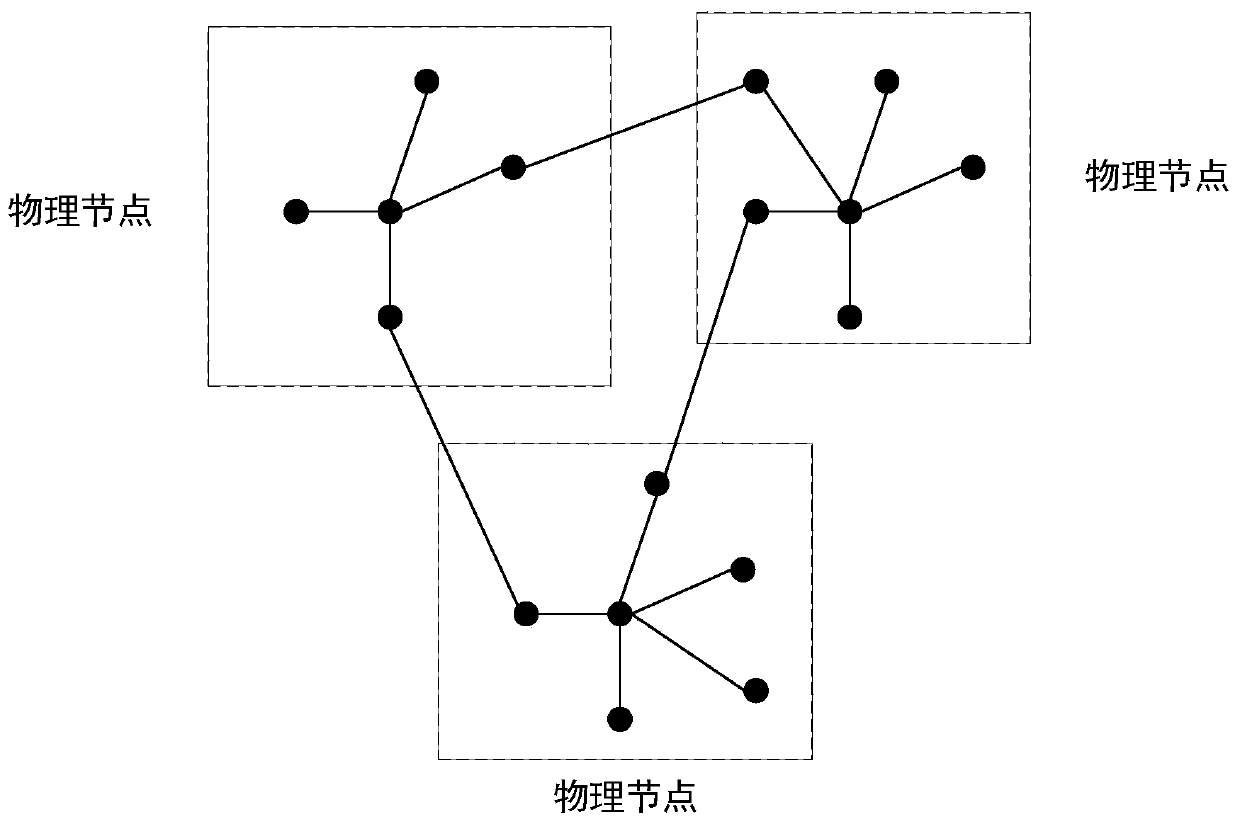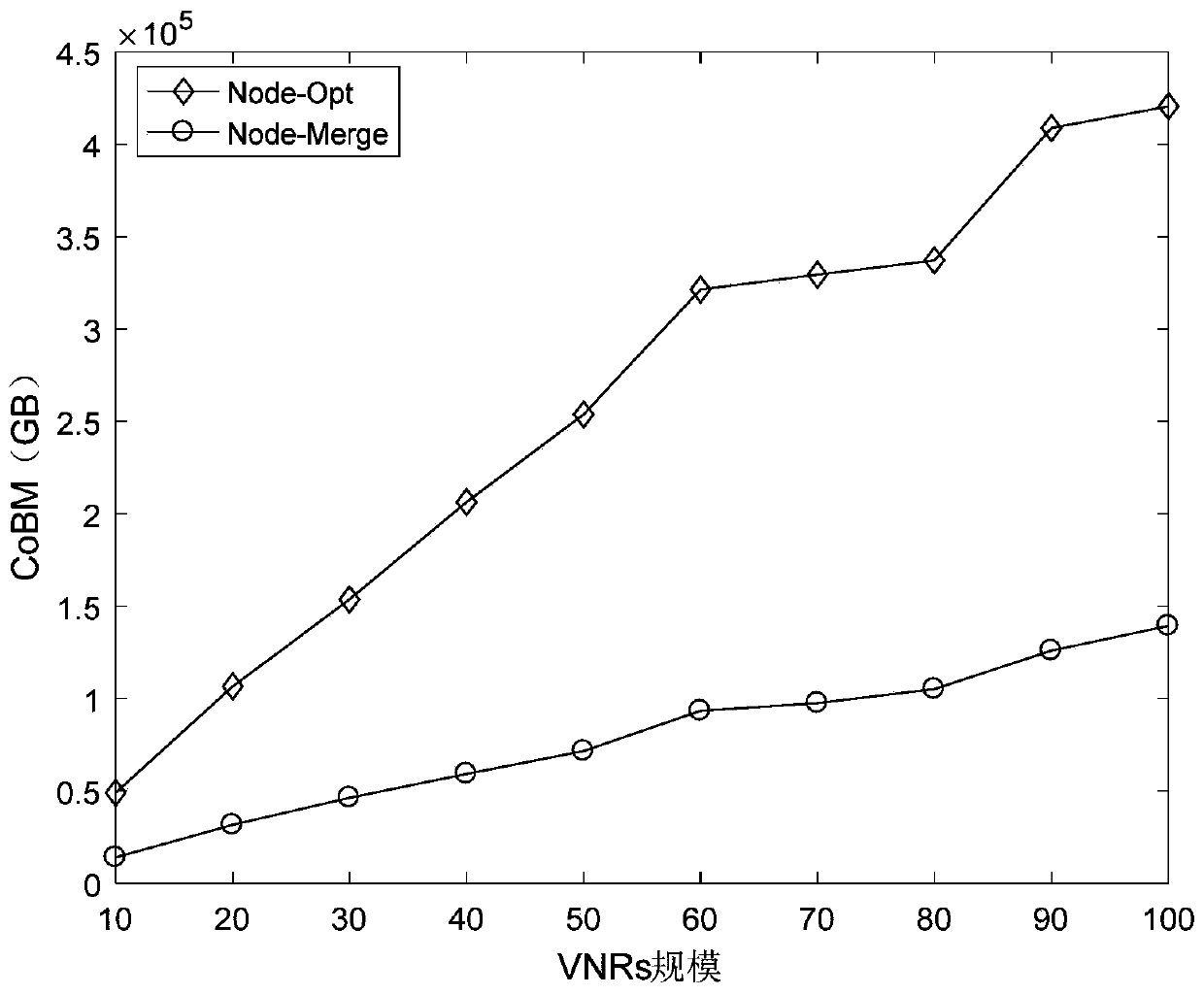A Virtual Network Mapping Method Based on Optimizing Cost-Benefit Ratio
A technology of virtual network mapping and virtual network, which is applied in the field of large-scale virtual network mapping based on the optimized cost-benefit ratio, and can solve the problems of high mapping success rate and so on.
- Summary
- Abstract
- Description
- Claims
- Application Information
AI Technical Summary
Problems solved by technology
Method used
Image
Examples
specific Embodiment approach 1
[0023] Embodiment 1: A virtual network mapping method based on optimizing the cost-benefit ratio includes the following steps:
[0024] Step 1: Initialize the virtual network and the physical network, create the physical network sorting array PGAR[] and the virtual network sorting array VGR[], PGAR[] and VGR[] respectively represent the physical node array in the physical network and the virtual network in the virtual network array of nodes;
[0025] Step 2: Calculate the remaining resources of the physical nodes in PGAR[], and sort them from large to small;
[0026] Step 3: Calculate the resource requests of the virtual nodes in VGR[], and sort them from large to small;
[0027] Step 4: Calculate the initial quantity MergeCenterNum of virtual centers (referring to virtual nodes), and map the former MergeCenterNum virtual nodes of VGR[] to the former MergeCenterNum physical nodes of PGAR[] as virtual centers;
[0028] Step 5: For all non-virtual center nodes in the virtual n...
specific Embodiment approach 2
[0056] Specific embodiment two: the difference between this embodiment and specific embodiment one is: the specific process of calculating the remaining resource amount of the physical node in PGAR[] in the step two is:
[0057]
[0058] where AR v is the remaining resource amount of the physical node in PGAR[], FreeC(v) is the idle CPU resource of the physical node v, is the sum of link bandwidths connected to physical node v, E(v,u) is the link between physical nodes u connected to physical node v, E v is the set of all physical links connected to physical node v.
[0059] Other steps and parameters are the same as those in Embodiment 1.
specific Embodiment approach 3
[0060] Embodiment 3: The difference between this embodiment and Embodiment 1 or 2 is that the specific process of calculating the resource request amount of the virtual node in VGR[] in the step 3 is:
[0061]
[0062] where R i is the resource request amount of the virtual node in VGR[], C(i) is the CPU resource request amount of virtual node i, is the sum of link bandwidths connected to virtual node i, E(i,j) is the link between virtual node j connected to virtual node i, E i is the set of all virtual links connected to virtual node i.
[0063] Other steps and parameters are the same as those in Embodiment 1 or Embodiment 2.
PUM
 Login to View More
Login to View More Abstract
Description
Claims
Application Information
 Login to View More
Login to View More - R&D
- Intellectual Property
- Life Sciences
- Materials
- Tech Scout
- Unparalleled Data Quality
- Higher Quality Content
- 60% Fewer Hallucinations
Browse by: Latest US Patents, China's latest patents, Technical Efficacy Thesaurus, Application Domain, Technology Topic, Popular Technical Reports.
© 2025 PatSnap. All rights reserved.Legal|Privacy policy|Modern Slavery Act Transparency Statement|Sitemap|About US| Contact US: help@patsnap.com



